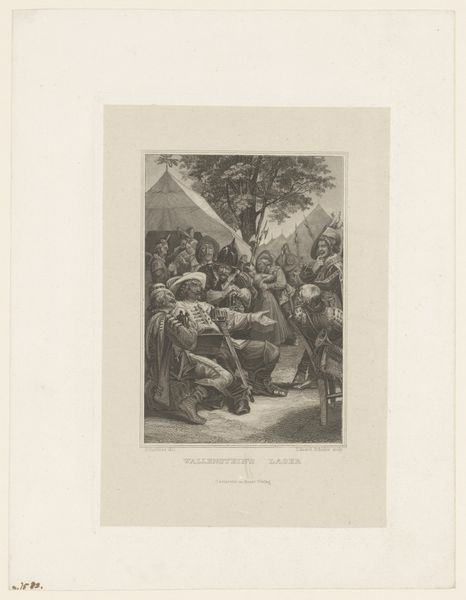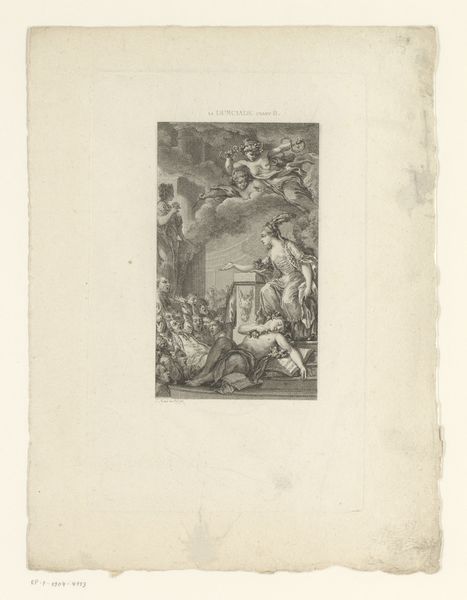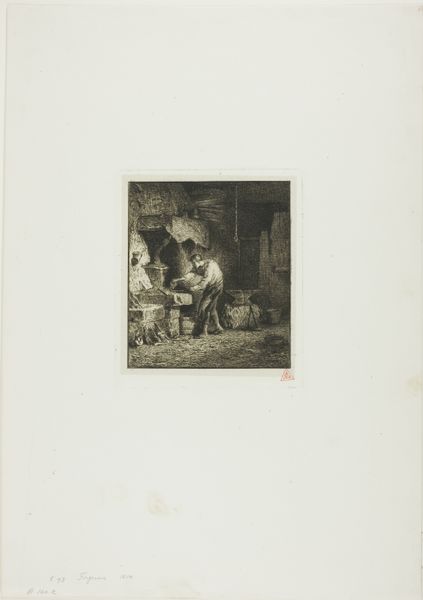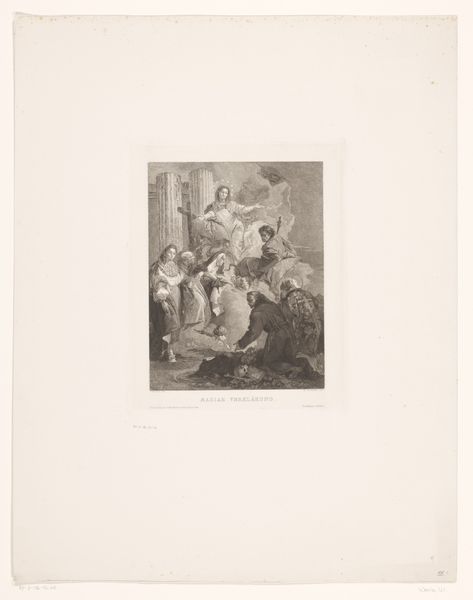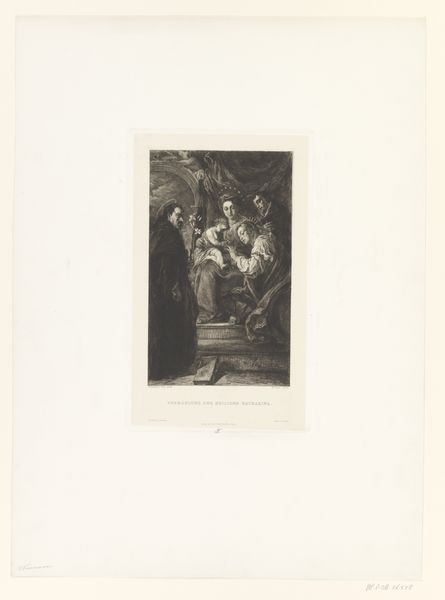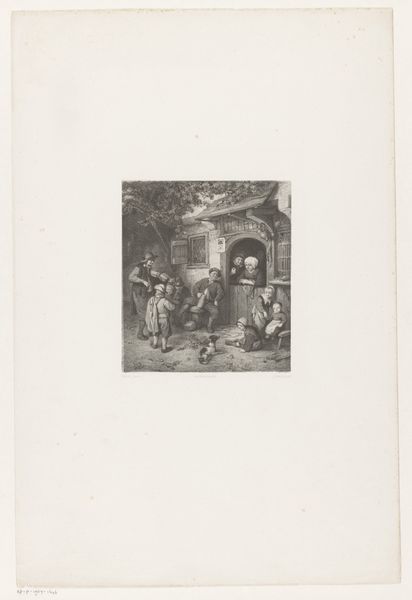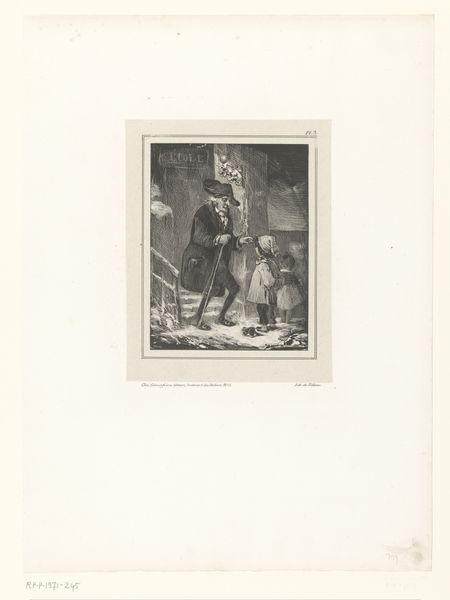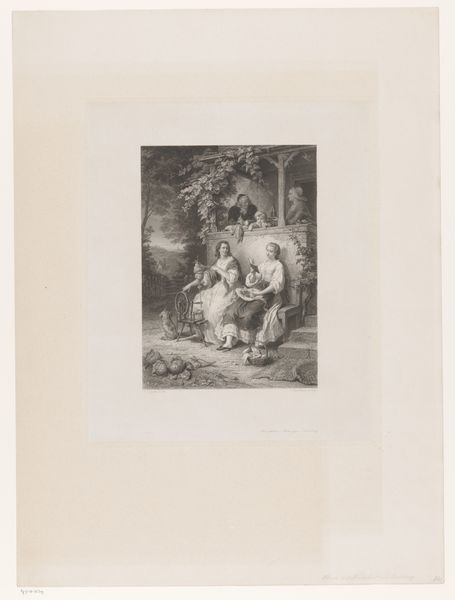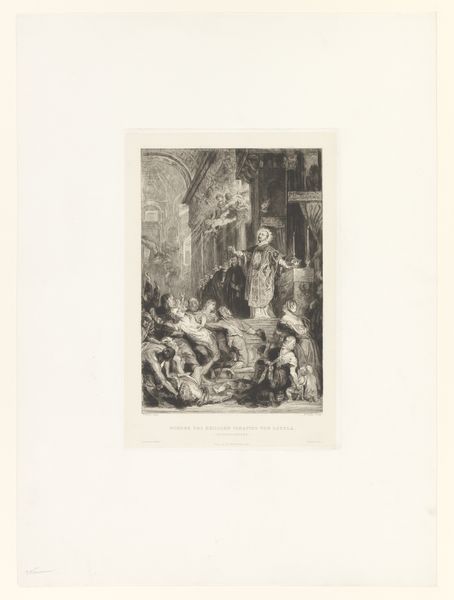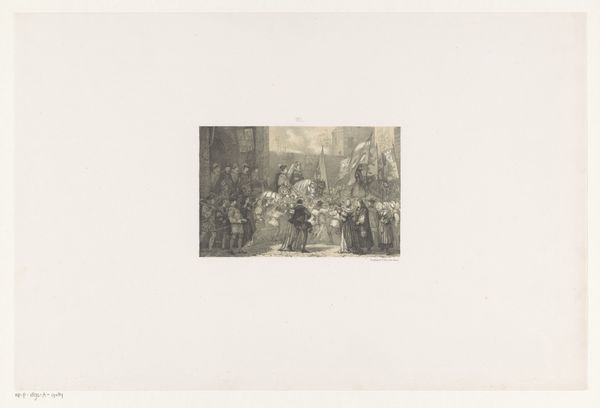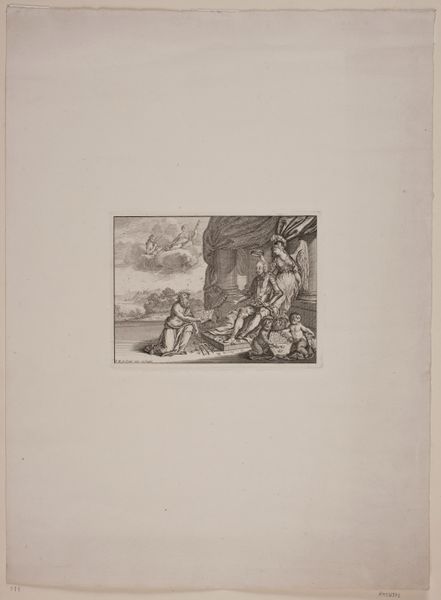
Dimensions: height 302 mm, width 250 mm
Copyright: Rijks Museum: Open Domain
Editor: Here we have Charles Rochussen's "Smid beschermt zijn dochter", or "Smith Protecting His Daughter," made before 1854. It’s an engraving, a print, which immediately makes me think about the role of reproducibility. The tonal art is very striking as well. How do you approach this piece? Curator: Well, first we have to acknowledge that printmaking, particularly engraving, was fundamentally about access. The meticulous labor involved, the transfer of imagery from a singular design onto a matrix, allowed narratives, and therefore ideologies, to circulate widely. Consider, then, the specific subject: A blacksmith shielding his daughter. Editor: It feels very dramatic. Like a snapshot of some historical event. Curator: Exactly. But what historical context are we really engaging with here? Think about the Romantic movement, in which this artwork is categorized. Consider how Romanticism used and arguably, fetishized, the pre-industrial. The honest trades, rural life; all contrasted with anxieties of modernity. Now look at the Smith's tools, and the act of protection – of safeguarding a daughter. Doesn't this engraving essentially use an historical narrative to romanticize pre-industrial forms of labor? Editor: So it’s not just a record of an event, but an argument being made using particular tools and processes of that period? About anxieties related to changing times? Curator: Precisely! Consider how this "history painting", through the reproducible medium of the print, enters the home. It’s consumed as both art object and cultural message. Consider how art intersects directly with broader trends of labor and anxieties about technological advancement during industrialisation. Editor: I never thought about an artwork as a site of different types of labour converging - the blacksmith in the picture, and the engraver producing the work. It makes the piece so much richer to consider! Curator: Absolutely. It opens up avenues to understanding artistic processes as entangled with their economic, social and historical contexts.
Comments
No comments
Be the first to comment and join the conversation on the ultimate creative platform.
